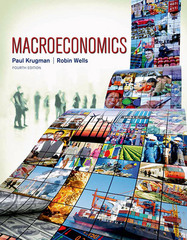Question
A monopolist faces a market demand curve given by Q = 70 - P.The Monopolist's marginal revenue function is given by: MR = 70 -
A monopolist faces a market demand curve given by Q = 70 - P.The Monopolist's marginal revenue function is given by: MR = 70 - 2Q.
a. If the monopolist can produce at constant average and marginal costs of AC = MC = 6, what output level will the monopolist choose in order to maximize profits? What is the price at this output level? What are the monopolist's profits?
b. Assume instead that the monopolist has a cost structure where total costs are described by TC = 0.25Q2 - 5Q + 300 and marginal cost is given by MC = 0.5Q - 5. With the monopolist facing the same market demand and marginal revenue, what price quantity combination will be chosen now to maximize profits? What will profits be?
c. Assume now that a third cost structure explains the monopolist's position, with total costs given by TC = 0.333Q3 - 26Q2 + 695Q - 5,800 and marginal costs given by MC = Q2 - 52Q + 695. Again, calculate the monopolist's price quantity combination that maximizes profits. What will profits be? (Hint: Set MC = MR as usual and use the quadratic formula or simple factoring to solve the equation for Q.)
d. Graph the market demand curve, the MR curve, and the three marginal cost curves from part a, part b, and part c. Notice that the monopolist's profit-making ability is constrained by (1) the market demand curve it faces (along with its associated MR curve), and (2) the cost structure underlying its production.
Step by Step Solution
There are 3 Steps involved in it
Step: 1

Get Instant Access to Expert-Tailored Solutions
See step-by-step solutions with expert insights and AI powered tools for academic success
Step: 2

Step: 3

Ace Your Homework with AI
Get the answers you need in no time with our AI-driven, step-by-step assistance
Get Started


